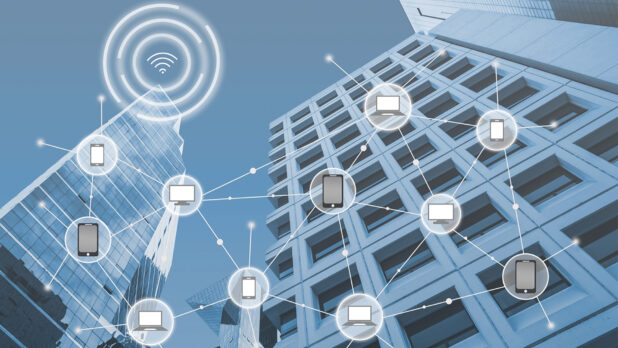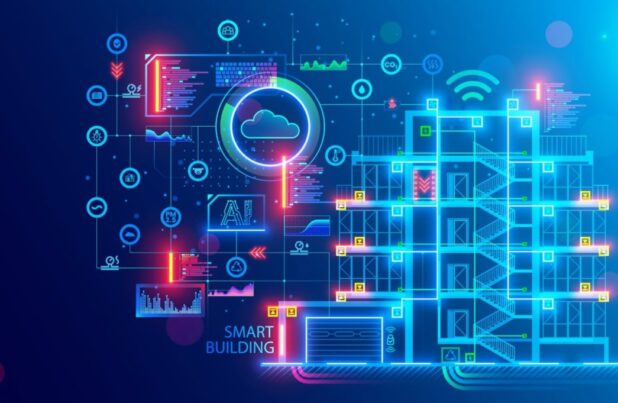Technology has evolved over the years, and the building differs from what it was decades ago. Today, facilities use technology for many things like controlling the temperature, conserving energy, etc. Smart building technology refers to all the tools used to optimize the operation of a building.
These systems make the building less costly by improving energy efficiency, the air healthier with better indoor air quality, and the people who dwell or work there happier. We shall look at what smart building technologies entail, the types, and how they work. You can click here to learn more.
Table of Contents
What is Smart Building Technologies?

Smart building technologies refer to the Internet of Things (IoT) solutions, including hardware, software, and connectivity that remotely monitors and manages lighting, HVAC, energy, etc. Smart buildings are automated and responsive to your needs and the current weather conditions and are more efficient. There are several types of smart building technologies:
1. Internet of Things (IoT)
The Internet of Things (IoT) is a system with multiple connected devices via a standard Internet Protocol (IP). The devices exchange and analyze data and are connected via microchips, sensors, switches, or controllers, allowing them to communicate and work together. This technology helps in many ways, from temperature regulation to programming emergency systems
2. Artificial Intelligence
Like IoT, Artificial Intelligence (AI) has become prevalent. AI is when software or machines mimic human intelligence and behavior and can apply and acquire knowledge. This ability allows decision-making or automation within the software or machine with zero human intervention. AI applications within smart buildings are typical today, especially because it’s possible to integrate AI into IoT devices and sensors easily
3. Smart Sensors
Smart sensors are a crucial part of IoT technology. These sensors connect with remote sites and assets to retrieve data that needs analysis and organization. From security controls and remote access, smart sensors provide numerous functions that streamline a building’s management. Smart sensors can help track tenants’ utility usage or gauge the structure’s stability.
Smart buildings work by retrieving data from the building and translating it into actionable insights that managers can use to improve the efficiency of a building. For instance, a smart building can adjust its air conditioning depending on the number of people in the building, leading to more efficiency in energy consumption.
Advantages of Implementing Smart Building Technologies

Implementing smart building technologies comes with some benefits:
Improved Energy Efficiency
One of intelligent building technology’s most significant benefits remains reduced energy consumption. In a smart building, you can control and automate the energy usage per area. This means when a space is not in use, it does not heat, cool, or have lights on.
Improved Building Management
You can set the system to tell you when maintenance is due or alert you when a specific component is faulty. Smart buildings use the data collected from sensors to predict when equipment needs replacing. This data saves you from having to do costly emergency repairs.
Enhanced Security
Smart technologies enhance the security system’s effectiveness by using smart equipment and security features to manage and secure the building. Such features include alarms, smart door locks, alarms, etc.
Improved Comfort and Productivity
The building’s occupants will be more comfortable and productive in a smart building, which can manage environmental factors like lighting, heating, and cooling. Measuring ventilation flow and carbon dioxide detection also makes the occupants comfortable.
Increased Cost Savings
A smart and efficient building reduces overall costs due to automated decision-making by the system. For instance, when you heat an area of the building where people are working, you save on the costs of heating an entire area that is not in use.
Factors to Consider When Implementing Smart Building Technologies

When implementing smart building technologies, you must consider the following:
Integration with existing systems
The smart solution you implement must be compatible with your existing systems. Otherwise, you will spend more revamping the entire system.
Cost and Budget
Consider what the entire project will cost you and your budget. If you are switching from analog to smart systems, you can do it in phases rather than all at once.
Technical and operational support
Ensure that you have future technical and operational support long after you have installed the solutions. You do not need a malfunctioning system and must endure downtime because of a lack of technical and operational support.
Technology is very fluid and keeps progressing. Smart technologies in buildings are the way to go in reducing energy consumption and efficiency, costs, and carbon footprint. A building with analog systems will not exist in a few years, as automation saves everyone time and money.
 World Magazine 2024
World Magazine 2024






